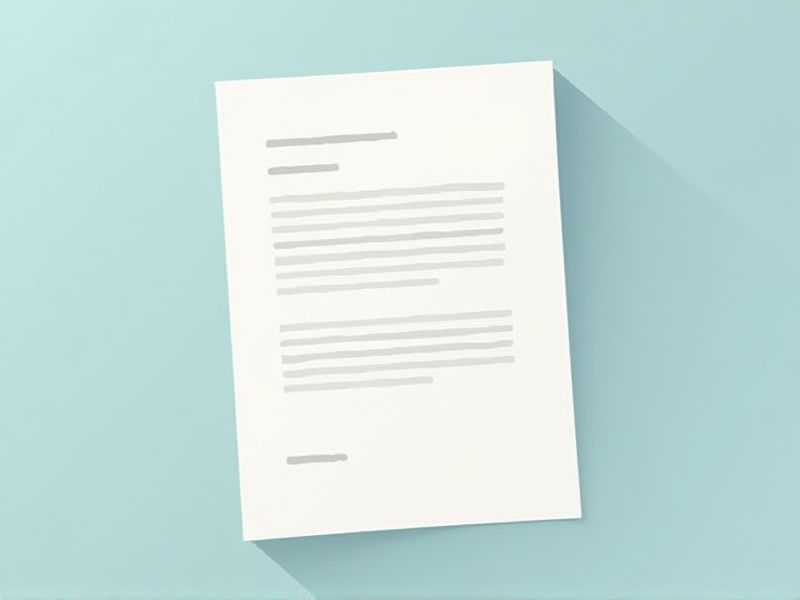
A formal letter format in English follows a clear and professional structure to ensure effective communication. It typically begins with the sender's address and date, followed by the recipient's address. A polite salutation is used, such as Dear Sir/Madam or the recipient's name with a title. The body of the letter is divided into concise paragraphs that convey the message clearly and respectfully. For those needing guidance, this article offers various formal letter templates to help you write with confidence and precision.
Samples of letter format formal in english
Formal Letter Template For Job Application
Business Letter Format For Complaint Resolution
Formal Resignation Letter Template
Inquiry Letter Format For Product Information
Formal Cover Letter Format For Internship
Letter Of Recommendation Format For Employment
Formal Letter Format For Event Invitation
Appreciation Letter Format For Employee Recognition
Formal Letter Of Apology Format For Customer Service
Notification Letter Format For Lease Termination
Formal Letter Format For Bank Loan Request
Job Acceptance Letter Format For Employment
Formal Letter Format For Scholarship Application
Cover Letter Format For Graduate School
Formal Letter Format For Change Of Address
Letter Format For Parental Consent
Formal Letter Format For Business Partnership Proposal
Formal Letter Format For Personal Leave Request
Reference Letter Format For Volunteer Work
Formal Letter Format For Meeting Request
Important Things to Know when Writing Letter Format Formal In English
Use A Professional Header With Sender’S And Recipient’S Addresses
A formal letter should always begin with a professional header that includes both the sender's and recipient's addresses, ensuring clarity and proper identification. The sender's address typically appears at the top right corner, followed by the date, while the recipient's address is aligned on the left, below the date. This structure not only establishes professionalism but also aids in the organization of correspondence. Remember, presenting this information clearly sets the tone for the entire letter and demonstrates respect for the recipient.
Include A Formal Salutation (E.G., Dear Mr./Ms. Last Name)
A formal letter format begins with a proper salutation, which sets the tone for your communication. Use "Dear Mr./Ms. Last Name" to address the recipient politely and respectfully, ensuring you spell their name correctly. Following the salutation, it's important to maintain a professional tone throughout the letter, using clear and concise language. Lastly, don't forget to include a formal closing such as "Sincerely" or "Best regards" before signing your name, reinforcing your professionalism.
Maintain A Clear And Concise Body With Proper Paragraphs
In a formal letter format, it's essential to organize the body into clear and concise paragraphs to convey your message effectively. Each paragraph should focus on a single point or idea, allowing the reader to easily follow your thoughts. Be mindful of your tone, ensuring it remains professional and respectful throughout the letter. Proper structure not only enhances readability but also demonstrates your attention to detail and professionalism.
Use Polite And Respectful Language Throughout
Using polite and respectful language is crucial in formal letter writing. This approach not only conveys professionalism but also reflects your consideration for the recipient. When addressing someone, ensure you use their appropriate title and maintain a courteous tone throughout the correspondence. Your choice of words can significantly impact the reader's perception and response.
End With A Formal Closing (E.G., Yours Sincerely) Followed By Your Signature And Printed Name
A formal letter format concludes with a courteous closing that reinforces professionalism. Common options include "Yours sincerely" or "Yours faithfully," chosen based on whether you know the recipient's name. After the closing, it's essential to include your signature for authenticity, followed by your printed name for clarity. This structured approach ensures your correspondence is respectful and maintains a clear line of communication.
